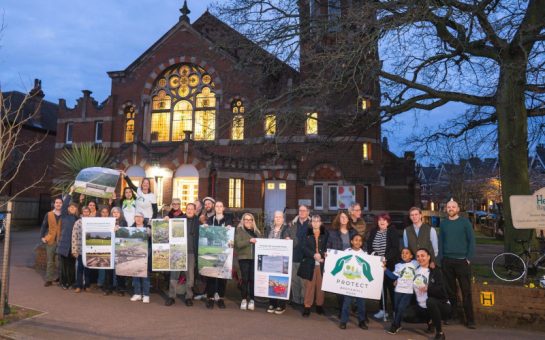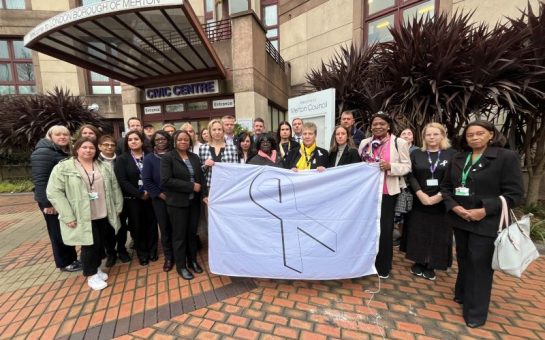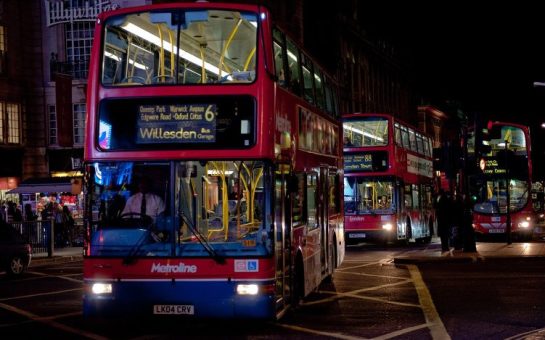Erik Samuelson is optimistic about a move to Plough Lane.

AFC Wimbledon may have beaten Burton Albion 3-1 at the weekend, but they are facing challenges off the pitch, as the tussle for Wimbledon Greyhound Stadium continues.
The League Two club formed in 2002 with no team, no players or manager, but a lot of dedicated football fans, abandoned by the Dons move to Milton Keynes. Erik Samuelson, the CEO, said it has outgrown its Kingsmeadow stadium.
“At the moment we’re constrained by the size of the ground. 4,100 come for the average game, which is good for the league we’re in. The stadium’s effective capacity is 4,850 but we have to give opposition fans space for 550, even if they only bring 100. We could sell more tickets to our fans but we can’t because of that.”
The proposal for the new Plough Lane stadium focuses on the idea that it would be ‘expandable.’ Mr Samuelson anticipates that with the move to a larger stadium, the club would grow too, a common trend which has seen an average attendance growth of 55% in new stadiums.
“It would start small and grow as the club gets better and rises through the leagues as we expect it will. It would be premature to build it too big, so the stadium only looks half full,” he said.
‘Big,’ would mean capable of housing 22,000 fans, an ambitious estimate; but it would start with space for 11,000.
“We don’t have a lot of space for entertaining young children in our current stadium, and that’s one of the reasons why we need to move,” Mr Samuelson said.
His two-and-a-half year old granddaughter attended Saturday’s match against Burton Albion.
The family-friendly nature of the club is something Mr Samuelson is clearly proud of, recalling the story of a child whose season ticket was bought whilst they were in utero.
“At first I wasn’t sure, but then I thought, ‘Why not?’ The child’s five or six now and still comes.”
The cost of a match day entry ticket for under-18s recently doubled, to vocal protests, and now costs £4. Keeping football affordable has been one of the club’s priorities, as has keeping it representative of the wants and needs of local football enthusiasts.
All strategic decisions are made by shareholder fans—a £25 investment for one share, buys one vote—enabling them to elect the board of The Dons Trust (which owns the football club), who in turn appoint the football club’s board, an entirely democratic process.
Whilst major league football exists in a bubble of tabloid scandals and unimaginable pay-cheques, AFC Wimbledon takes a more socially responsible attitude, and not just for photo-shoots.
The club is involved with local charities, most recently Street League, which helps young people who are no longer in education and struggling to get jobs. Certificates were awarded at Saturday’s match to graduates of this scheme.
“We entice young people to come by offering them the chance to play football, but if they want to continue they have to do education,” Mr Samuelson said.
The goal is to help them into employment. Mr Samuelson and Neal Ardley, the club’s manager, have been putting the participants through their paces in a series of mock job interviews.
“This kind of work will continue if AFC Wimbledon moves to Plough Lane. We want to increase our involvement in the community,” Mr Samuelson said.
He cleared up misconceptions about the proposal for the new stadium, which has not yet become a planning application. Merton Council has identified the land as suitable for development, which AFC Wimbledon proposes would be used for “sports intensification” in the borough.
In a joint bid with Galliard Homes, who co-own the site, the plans include constructing 600 homes in the area, as well as space for businesses and conference facilities within the stadium.
The three main sources of funding for the proposal will be selling the naming rights of the stadium; a share issue for fans, on which investors would get tax relief; and enabling development.
Mr Samuelson, who lives within walking distance of the stadium, laughed off comments made by Paschal Taggart that the area was ‘dreadful’.
“I wouldn’t describe it as dreadful,” he said. “It’s generally true that where you build a new football stadium, development blossoms around it. Other developments spring up around it and it’s good for the community.”
Fears about congested roads, expressed by local residents of Wimbledon Park who have compiled a dossier explaining their opposition to the plan, were explained away by Mr Samuelson.
“There are three rail stations within walking distance: Tooting Broadway, Earlsfield, and Haydon’s Road. It’s a good thing that transport venues aren’t too close to the stadium because we want the crowd to disperse as people leave, and the ten minute walk will help that. We want to encourage the use of public transport to minimise traffic.”
AFC Wimbledon are now in competition for use of the stadium with Taggart’s support group, ‘We Want Wimbledon’. They claim the stadium should remain London’s last bastion of greyhound racing, a sport that Mr Samuelson says he has enjoyed at Plough Lane. The group have accumulated over 4,000 signatures to present to Merton Council.
Mr Samuelson said AFC Wimbledon would not be orchestrating a similar petition to convince the council of their case.
“If the fans want to put a petition together they should, but it’s not something that the club should do. It has more impact if the fans do it themselves.
We’ve got very well organised and sophisticated fans, who if they do organise something, will do it very well.”
As the next stage of the bid begins, AFC Wimbledon’s fans will be impatient to hear whether the club will be returning to its home turf.
Photo courtesy of sarflondondunc, with thanks.
Follow us @SW_Londoner




